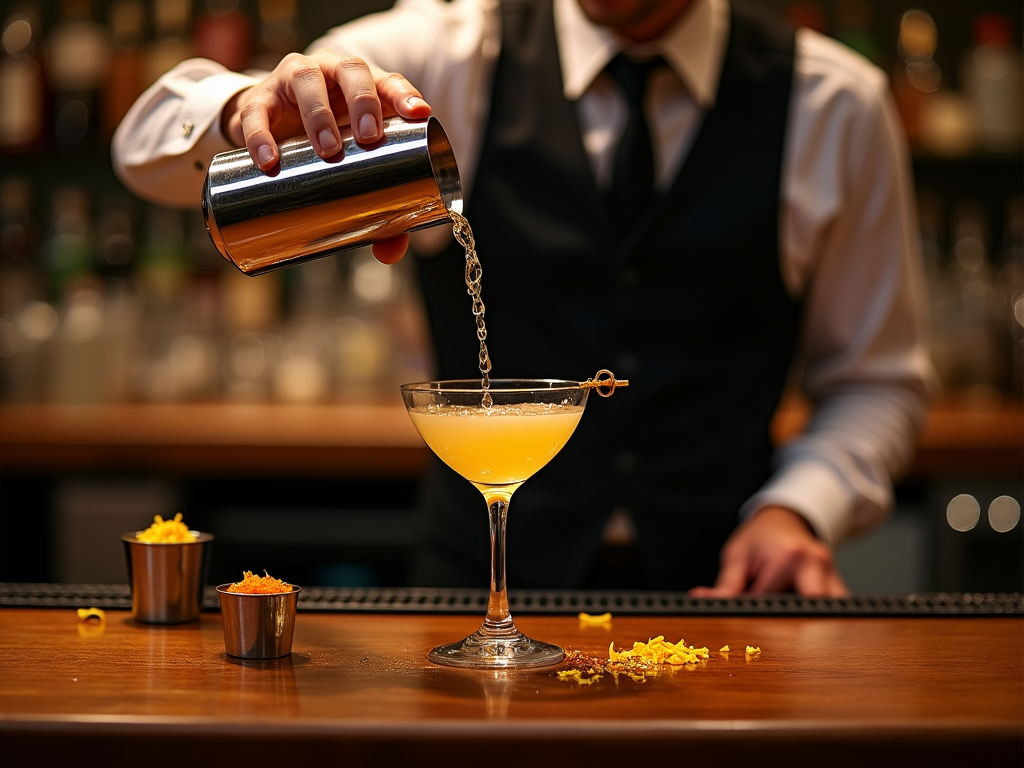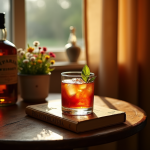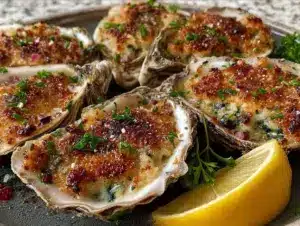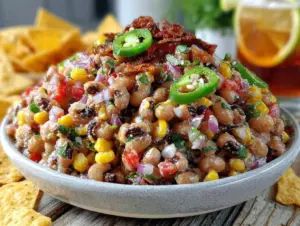The Fascinating Origin of the Scofflaw Cocktail
In the spirited world of classic cocktails, the Scofflaw cocktail stands out not only for its balanced flavor but also for the bold story behind its creation. This drink first made waves in 1924, right in the heart of the Prohibition era, a time when the United States had banned the production, sale, and transportation of alcohol. Strangely enough, the Scofflaw wasn’t created on American soil; instead, it was crafted at the legendary Harry’s New York Bar in Paris, a hotspot for expatriates and cocktail innovation during this otherwise dry period.
The name “Scofflaw” itself carries a sharp, witty edge. It emerged following a contest initiated by Delcevare King, a wealthy Prohibition advocate who sought to publicly ridicule those who flouted the law. The term was meant to shame those resisting the government’s mandate, but it backfired in the most delightful way. Instead of evoking disdain, “scofflaw” became a badge of honor for rebellious drinkers. Shortly after the term gained traction, Harry’s New York Bar immortalized it with its own liquid invention, creating the now-famous Scofflaw cocktail.
This whimsical yet defiant naming reflected the culture of the time. It epitomized the clever ways people pushed back against restrictions, blending humor and rebellion into their everyday lives. By crafting a cocktail with such a bold name, the bartenders at Harry’s New York Bar struck a chord with their patrons, offering them not just a drink but a celebration of freedom, creativity, and resistance. This wasn’t just a toast to good times; it was a liquid declaration of independence.
Over the years, the Scofflaw has garnered a loyal following, but its original recipe remains deeply tied to those Prohibition-defying roots. Combining the light zest of fresh lemon juice, the sweetness of grenadine, the complexity of dry vermouth, and the robust character of rye whiskey, it symbolized a perfect balance—both in flavor and in spirit. From Paris to modern-day bars worldwide, the Scofflaw continues to delight and surprise drink enthusiasts, proving that history can, indeed, be savored in a glass.
The Historical Significance of the Scofflaw Cocktail in the Prohibition Era
The story of the Scofflaw cocktail is inseparably tied to the Prohibition Era—a time when the United States declared war on alcohol consumption, yet the spirit of rebellion flourished in full force. Born in 1924 at the legendary Harry’s New York Bar in Paris, the drink was a direct response to the growing culture of defiance against strict government regulations.
Its name stems from a term coined in a contest sponsored by Delcevare King, meant to label those who flouted Prohibition laws as “scofflaws.” Instead of being shamed, though, the scofflaw identity became a badge of honor for underground drinkers and mixologists who saw creativity as a form of resistance. Isn’t it remarkable how a simple cocktail could embody boldness at a time when enjoying spirits was painted as criminal?
During its prime, the Scofflaw cocktail represented more than just a tasty concoction; it was a cultural icon, bearing witness to secretive speakeasies where the clinking of glasses echoed rebellion. Rye whiskey, grenadine, and a splash of dry vermouth formed the heart of this drink, each ingredient reflecting the ingenuity of mixologists trying to craft beverages that didn’t just skirt the law but elevated flavor profiles. These hidden chambers weren’t merely places for cocktails—they were hubs of innovation, culture, and outright defiance against oppressive mandates.
Fast forward to today, the Scofflaw stands as a living postcard from history, reminding enthusiasts not just of its delicious taste but of the undying creativity that emerges in the face of adversity. While the Prohibition may seem like a distant past, the cocktail remains relevant, showcasing how history, rebellion, and artistry can converge beautifully in a single glass. As you sip on this delightful blend, you’re not just tasting a drink—you’re savoring an era that refused to let prohibition silence its spirit.
Crafting the Perfect Scofflaw Cocktail Recipe
Creating the perfect scofflaw cocktail combines artistry, precision, and a touch of creativity. This Prohibition-era gem may have roots in rebellion, but its harmonious blend of flavors is anything but chaotic. The classic recipe remains a testament to balance, calling for quality ingredients and careful preparation. Traditionally, the cocktail starts with 2 ounces of rye whiskey as its bold foundation, bringing warmth and an edge of spice. To this, 1 ounce of vermouth is added—a crucial choice that can make or break the drink’s overall flavor profile. While dry vermouth was historically standard, many modern interpretations favor French blanc vermouth, thanks to its subtle sweetness and smooth texture.
Fresh lemon juice, vital for cutting through sweetness and introducing brightness, typically makes up ¾ ounce. Pair it with a dash (or up to ½ ounce) of grenadine, a vibrant pomegranate syrup, which works to balance the tartness with a hint of rich, fruity sweetness. Finally, to elevate the mix, add a few drops of orange bitters. This underappreciated ingredient ties the flavors together, adding depth and rounding off the drink’s edges. Once all ingredients are measured, they’re shaken vigorously with ice to ensure proper chilling and dilution, then strained into a chilled coupe glass. To finish, garnish with a twist of lemon peel for an aromatic flourish.
While the classic scofflaw cocktail recipe itself is straightforward, slight adjustments can give it a more personalized flair. Swap rye for bourbon if you crave a sweeter base or experiment with grenadine varieties to find the perfect level of tartness. The cornerstone of success lies in balancing bold whiskey with citrus, sweetness, and the dry complexity of vermouth. Whether you stick closely to tradition or venture into modern adaptations, this cocktail rewards attention to detail, proving that even a drink born from defiance can achieve timeless sophistication.

Understanding the Role of Vermouth in a Scofflaw Cocktail
Vermouth is more than just an ingredient in the Scofflaw cocktail; it’s the backbone of the drink’s complexity and balance. Traditionally, dry vermouth was used in the original Prohibition-era recipe crafted at Harry’s New York Bar in Paris. Its herbal, slightly bitter profile contrasts beautifully with the spicy warmth of rye whiskey, creating a cocktail that feels both sophisticated and approachable. However, modern interpretations have expanded this choice, with many mixologists opting for French blanc vermouth, which adds a gentle sweetness and a floral dimension to the cocktail. This subtle adjustment helps brighten the overall flavor and makes the drink more inviting to a broader audience.
The choice of vermouth can dramatically influence the Scofflaw cocktail, shifting its taste from crisp and dry to lush and aromatic. For those seeking a classic approach, a high-quality dry vermouth—such as Dolin or Noilly Prat—is ideal, as these pair flawlessly with the tartness of fresh lemon juice and the sweetness of grenadine. Meanwhile, blanc vermouth, like Dolin Blanc or Carpano Bianco, brings in a smooth, slightly creamy texture that balances the sharper citrus notes. Both options offer unique takes on the Scofflaw, proving that this Prohibition-era gem is as versatile as it is historic.
Beyond its taste enhancement, vermouth also plays a critical technical role, acting as a bridge between the strong, earthy complexity of whiskey and the vibrant freshness of the other ingredients. It smooths the edges, ensuring all the flavors harmonize rather than compete. The proportions of vermouth in a Scofflaw are equally vital. Too much, and the drink becomes overpowered by herbal flavors; too little, and the cocktail loses its depth. Striking the right balance—typically an ounce against two ounces of whiskey—creates the perfect interplay that defines this beloved drink.
When crafting your own Scofflaw cocktail, experimenting with different vermouths can be a rewarding journey. Dry vermouth stays true to tradition, while blanc vermouth introduces a more modern flair. Whatever your choice, always make sure the vermouth is fresh! A stale vermouth won’t do justice to this historically rich and flavor-packed cocktail, so keep your bottle sealed tightly and refrigerate after opening. The right vermouth transforms a simple combination of ingredients into a truly unforgettable drink.
Modern Interpretations: Creative Twists on the Classic Scofflaw Cocktail
The Scofflaw cocktail has come a long way since its inception at Harry’s New York Bar in Paris during the Prohibition era. While the original recipe boasts a timeless blend of rye whiskey, dry vermouth, grenadine, and fresh lemon juice, today’s mixologists are breathing new life into this classic drink with inventive twists. From swapping out ingredients to experimenting with proportions, modern variations demonstrate how versatile this cocktail can be while still honoring its roots. These interpretations aren’t just playful; they expand the boundaries of flavor and complexity, offering fresh ways to enjoy an old favorite.
One popular modern adjustment involves using French blanc vermouth instead of dry vermouth. This subtle change introduces a hint of sweetness that rounds out the drink’s natural tartness. Some bartenders also opt for higher-quality grenadine, often homemade, which offers richer fruit notes that elevate the entire flavor profile. Meanwhile, others have explored the idea of substituting rye whiskey for bourbon, creating a softer, slightly sweeter variation that appeals to a broader palate. These ingredient swaps prove how even small tweaks can completely transform the character of a Scofflaw cocktail.
Beyond ingredient substitutions, creative garnishes and presentation techniques are also making waves. Fresh herbs like thyme or rosemary, when lightly muddled or used as an aromatic garnish, add an earthy complexity while giving the drink a modern, artisanal touch. Some adventurous mixologists even experiment with barrel-aging their Scofflaw, allowing the flavors to deepen and intermingle over time for an especially robust take. Such innovations ensure this historic cocktail isn’t merely preserved but constantly reimagined for the contemporary drinker.
These imaginative updates demonstrate the Scofflaw’s enduring appeal as a canvas for experimentation. Whether it’s a vibrant take on the classic or an entirely new direction, modern interpretations show that the spirit of defiance embodied in the Scofflaw cocktail can still inspire creativity and excitement behind the bar today. The next time you’re crafting or ordering a Scofflaw, don’t hesitate to embrace a unique twist—you might just uncover your new favorite blend.

Unpacking the Flavor Profile of the Scofflaw Cocktail
The scofflaw cocktail boasts a flavor profile that is as intriguing as its rebellious origins. At its heart, this drink is a masterclass in balance and nuance—a symphony of contrasting and complementary tastes that delight the palate. The vibrant tartness of fresh lemon juice provides a sharp and invigorating base, while the sweetness of grenadine softens the citrus bite, lending a subtly fruity depth. Layered atop this interplay is the unmistakable character of rye whiskey, with its rich, slightly spicy notes that ground the drink in bold complexity.
However, what truly sets the scofflaw cocktail apart is the role of vermouth. Traditionally dry vermouth is used, adding a whisper of herbal elegance to the mix. Some modern variations incorporate blanc vermouth instead, enhancing the drink’s sweetness while maintaining its refined edge. Either choice shapes the drink’s final taste—dry vermouth leans toward crisp sophistication, while blanc brings a softer, balanced warmth.
The cocktail’s flavor complexity further unfolds as bitterness provides a subtle counterpoint to sweetness and citrus. This element often results from the combination of grenadine quality and whiskey choice. Together with citrus oils from the freshly squeezed lemon juice, these ingredients create a multi-dimensional tasting experience that transitions from bright and tangy to smooth and slightly earthy.
Sipping a scofflaw is like experiencing a carefully orchestrated performance. The top notes sing with vibrancy, the middle tones mellow with sweetness, and the finish leaves behind a lingering complexity—dry, herbal, and reminiscent of a bygone era. Whether enjoyed as an homage to Prohibition-era ingenuity or simply crafted for its timeless appeal, this drink will always surprise and enchant with its well-rounded character.
Achieving the Ideal Ingredient Balance for a Well-Rounded Scofflaw Cocktail
The Scofflaw cocktail may seem straightforward at first glance, but achieving the perfect harmony of flavors is a true art. Balancing sweetness, acidity, dryness, and a hint of bitterness demands precision and thoughtful ingredient selection. A well-rounded Scofflaw combines boldness with subtlety, ensuring no one flavor dominates the others. Every sip should be a seamless dance of taste, leaving the drinker intrigued and satisfied.
One key to mastering this cocktail lies in the selection of whiskey. Traditionally, rye whiskey is preferred for its spicy character, but some bartenders opt for bourbon to introduce sweeter, mellower undertones. The amount you use has to hit the sweet spot—too little, and the drink feels thin; too much, and it overwhelms the other components.
Vermouth, the unsung hero in many cocktails, plays a vital role in achieving balance within a Scofflaw cocktail. While the classic recipe often calls for French dry vermouth, modern interpretations sometimes favor blanc vermouth to inject a touch of sweetness. It’s not just about the type but also the quantity—too much vermouth can make the drink unbearably dry, while too little might leave it overly sweet. Finding the equilibrium is crucial for crafting this historic beverage.
Grenadine and fresh lemon juice add complexity to the Scofflaw cocktail, lending vibrant notes that counterbalance the dryness of the whiskey and vermouth. Be mindful of how fresh your ingredients are. Quality grenadine, preferably homemade, will contribute a rich, tart sweetness, whereas store-bought alternatives can lean artificial and cloying. Similarly, fresh-squeezed lemon juice ensures the right amount of acidity to brighten the drink. A pinch too much or too little, however, can tip the scales dramatically.
Undoubtedly, achieving a perfect balance for this cocktail is as much about following precise measurements as it is about experimentation. Seasoned bartenders often tweak ratios based on the intensity of their ingredients or the preferences of their guests. To truly elevate the Scofflaw cocktail, consider the unique characteristics of each component—its flavor, aroma, and how it interacts with the others—and adjust accordingly until the drink resonates with your palate.
Ultimately, the magic resides in the interplay. Achieving balance doesn’t just make the Scofflaw cocktail taste good—it transforms it into an experience. With the right combination of well-thought-out adjustments, this Prohibition-era classic can reach new heights, bringing history and flavor into perfect alignment. Isn’t that the real essence of making a timeless cocktail?
Frequently Asked Questions About the Scofflaw Cocktail
What flavors can you expect from a Scofflaw cocktail?
The Scofflaw’s flavor profile is a captivating balance of citrus, sweetness, dryness, and a touch of bitterness. The rye whiskey (or bourbon) forms a bold and complex base, while the vermouth adds depth and subtle dryness. Lemon juice brings bright acidity, grenadine contributes a touch of sweetness and fruitiness, and optional bitters add dimension. The result is a nuanced, sippable cocktail that merges sophistication with spirited rebellion.
What Prohibition-era recipe adjustments can be made to the Scofflaw?
To honor the Prohibition-era roots of the Scofflaw, adjustments can include playful twists, such as:
Using homemade grenadine made from pomegranate juice and sugar for richer flavors.
Swapping rye whiskey for aged bourbon to soften the cocktail’s spiciness.
Adding a barspoon of orange liqueur for a citrus-forward variation.
Including a dash of absinthe for an herbal kick reminiscent of Parisian cocktail experimentation.
These adjustments pay homage to the ingenuity required during Prohibition while elevating the cocktail for contemporary palates.
What is the best vermouth for a Scofflaw cocktail?
Traditionally, French dry vermouth was the standard choice for its clean and crisp flavor. However, many modern bartenders recommend French blanc vermouth, which imparts a sweeter and more balanced profile that complements the tartness of lemon juice and grenadine. Brands like Dolin or Carpano Blanc are excellent options for achieving a well-rounded flavor. Experimenting with vermouths is highly encouraged, as slight variations can offer unique twists on this classic cocktail.
How does the modern Scofflaw differ from the original?
While the original recipe featured dry French vermouth and simple grenadine, modern versions often favor French blanc vermouth for its enhanced sweetness and balance. Additionally, higher-quality grenadine or homemade grenadine variations are used to elevate complexity and tartness. The whiskey can also be adjusted—rye delivers a spicier profile, while bourbon offers a smoother, sweeter sip. Some mixologists add a dash of bitters to introduce subtle bitterness and depth.
What ingredients make up a Scofflaw cocktail?
The classic Scofflaw cocktail recipe includes:
2 oz of rye whiskey (or bourbon)
1 oz of dry vermouth (or blanc vermouth for a sweeter touch)
1/2 oz of grenadine
1/2 oz of fresh lemon juice
Optional: a dash of orange bitters
Combine all ingredients in a shaker with ice, shake vigorously, and strain into a chilled coupe glass. Garnish with a lemon twist or cherry if desired.
Why was the Scofflaw invented during Prohibition?
The Prohibition era (1920–1933) inspired creativity in cocktail creation as bartenders sought ways to craft drinks using the illegal spirits smuggled across borders. The Scofflaw’s debut at Harry’s New York Bar highlighted a playful jab at restrictive American laws, celebrating a sophisticated yet defiant approach to cocktail culture. In Paris, where Prohibition wasn’t an issue, bartenders elevated the art of mixology, leading to innovative creations like the Scofflaw.
Table of Contents

Scofflaw Cocktail: The Bold Drink With a Rebel’s Prohibition-Era History
- Total Time: 5 minutes
- Yield: 1 cocktail 1x
Description
A classic Prohibition-era cocktail that blends rye whiskey, vermouth, and grenadine into a rebellious and sophisticated drink, born in the speakeasies of Paris.
Ingredients
- 2 oz rye whiskey
- 1 oz dry vermouth (or blanc vermouth)
- 1/2 oz grenadine
- 1/2 oz fresh lemon juice
- Optional: Dash of orange bitters
- Lemon twist or cocktail cherry for garnish
- Ice for shaking
Instructions
- Fill a cocktail shaker with ice.
- Pour 2 oz of rye whiskey into the shaker.
- Add 1 oz of dry vermouth.
- Measure 1/2 oz of grenadine and add to the mix.
- Squeeze 1/2 oz of fresh lemon juice.
- Optional: Add a dash of orange bitters.
- Shake vigorously for 10-15 seconds to chill and combine.
- Strain into a chilled coupe glass.
- Garnish with a lemon twist or cocktail cherry.
- Serve immediately and enjoy!
Notes
For the best flavor, use high-quality rye whiskey and fresh ingredients. Adjust vermouth type to suit your taste preferences – dry for a crisper drink or blanc for added sweetness.
- Prep Time: 5 minutes
- Cook Time: 0 minutes
- Category: Cocktail
- Method: Shaken
- Cuisine: American/French
Nutrition
- Serving Size: 1 cocktail
- Calories: 180
- Sugar: 5g
- Sodium: 2mg
- Fat: 0g
- Saturated Fat: 0g
- Unsaturated Fat: 0g
- Trans Fat: 0g
- Carbohydrates: 6g
- Fiber: 0g
- Protein: 0g
- Cholesterol: 0mg
Keywords: cocktail, prohibition, rye whiskey, vermouth, mixology




